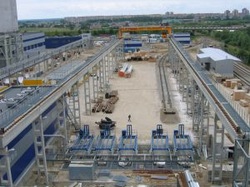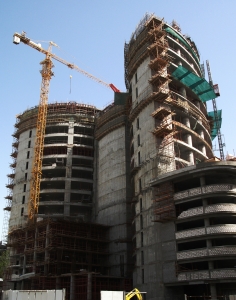 The implementation of commercial social responsibility, in recent years, has eventually developed how firms function. No longer do businesses simply pursue the bottom line recklessly disregarding its impact on our environment and impact in society. Nowadays, it really is regarded as cool to roll out eco-friendly campaigns that cover anything from inter-office recycling to Earth Hour participation. The business's media advertising arm sets about to work, showing the general public and partners alike of the company's green triumphs, in an effort naturally, to increase profits by way of consumer support and even improve public image. But integrating green policies in standard business procedures is far more than just getting the personnel to recycle and taking part in a coordinated worldwide effort to save energy. With an environmental management system (EMS) that's intended to match a particular form of company, the role of coping with environmental worries will in turn manage matters on functional expenses, and thus, the bottom line.
 Construction work in a certain neighborhood is often approached with interest, and indeed, some annoyance. There’s normally that very loud noise from heavy equipment that really annoy people’s nerves, and quite often, people are forced to adjust their normal path around the area to keep clear from the typical risks present inside the location of the construction site. As much as the workers behind the building don't want to possibly be of any disruption to the community, the nature of the task can't fully support this type of noble consideration.
A building workplace always presents a great deal of risks; there are dropping debris, massive dug-up openings, welding sparks, suffocating dirt in the atmosphere, and a number of other types of hassle. The amount of task which should be performed, paired with the area’s unstable conditions show a smorgasbord of risks that require necessary awareness for the procedures to move smoothly. As a result, producing a good environmental management system manual isn't just some papers which should be published and approved for actual project to start; it works like a motivation and promise of the “right way” development job will be performed in which dangers and problems can be lessened or completely removed to attain the preferred outcome of the plan.
 A grown man dressed in an ill-fitting suit appears strange. He appears odd because he could be walking around just like a child playing dress-up. A theater actor that’s speaking lines from “Mama Mia!” will seem silly. He will seem silly because he’s in a play called “Speaking in Tongues.” An architect that brings the plan of a two-storey narrow block house might concern his site foreman and client. He might concern his site foreman and client if he’s supposed to be developing a farmhouse. The same form of principles can be applied to your environmental management system manual. If the significant document doesn’t correspond to your construction project, you might not make your deadline and wind up incurring more costs that go above the project bid amount. The creation of an environmental management system in your construction firm is only the beginning of an implementation process to look after and constantly enhance the way your projects are carried out. The management process necessitates a tool, and that tool arrives in the form of the EMS manual. Your construction EMS manual will include procedures on training, managing records, completing internal audits, and identifying environmental aspects. It must detail how requirements of the system are going to be implemented. It'll have programmes and operational controls that fit into the EMS. It'll incorporate documents that log EMS training offered to employees, completion of management evaluations, and identification of environmental factors. It needs to likewise incorporate explanations and references that can help those examining the EMS. Commissioning a consultant to generate a tailored environmental management system (EMS) is usually expensive. Most businesses spend in excess of $10,000 for consultants and devote several months drafting it, ensuring that it adheres to existing Australian policies. However, there exists a less costly, less difficult means to develop an EMS manual that is in accordance with state and federal environmental rules. A specialised and thorough environmental management manual that reflects AS/NZS ISO 14001 standards can be commissioned with a reliable online EMS provider. A professionally written EMS manual will contain policies, processes, practices, and performance criteria of your construction business. The EMS manual is made for construction projects such as alteration or repair of a building, structural modification, or repair of viaducts or tunnels. Your EMS manual might also include a project-specific management plan, which all construction companies frequently call for as each project varies in scope and location. All that you should do is complete it in line with your project demands. An environmental management system manual that’s customised for each construction project which comes your way is a key tool that makes certain you deliver a project inside of the deadline, according to specifications, and with minimum impact to the environment. With a comprehensive and skillfully created manual made possible through online purchase, you can supply high-quality work without heavy costs.
 What’s beneficial for our environment is likewise beneficial for the bottom line. When Geelong Wool Combing Ltd. (GWC) began creating its environmental management system in 1997, it invested $100,000 plus $5,000 to $6,000 getting licensed. But the company’s savings seriously outweighed the amount spent for preparing their ISO 14001 environmental management system. By changing their boiler, GWC saved $180,000 every year. By optimising their detergent use, they saved $60,000 each year. Simply by making upgrades to their by-product recovery systems, GWC increased their estimated income by $250,000. Moreover, once the wool-processing plant looked into zero waste off-site, they managed to incorporate their waste products into saleable compost, which let them eliminate 20 tonnes of daily waste and gave them an added avenue for generating income. You'll find numerous other companies around the world that have adopted a licensed environmental management system (EMS) so as to conform to legislation. For most of these corporations, the main objective might have been to avoid any type of consequence from governing bodies like the Department of Sustainability, Environment, Water, Population and Communities. However, with companies like GWC showing better earnings by arranging and enforcing more efficient environmental systems, the shift from mere compliance has gone on to continual development of the EMS. The ISO 14001 is the most utilised EMS worldwide. Around 223,000 organisations in over 159 countries are certified for it. As the key management system standard, the ISO 14001 concentrates on controlling the results a company’s activities have on the environment such as emissions to water or air. With this standard, companies need to set objectives, targets, and programmes necessary to improve overall environmental performance. Surprising cost reductions may be acquired from increased efficiencies in power and water use alone. The added value of reducing waste materials, as GWC had done, brings enormous possibilities to have an increased net profit. The standard obligations a company must meet with the ISO 14001 include compliance with regulations, continual advancement of the EMS, and prevention of pollution. For a company to totally gain advantages from the ISO 14001, it needs to have the whole dedication of top management. The burden of having to spend thousands in making the EMS can quickly be solved by opting for an expertly written, AS/NZ ISO 14001-compliant template which is readily employed and grasped by the very people who must implement it. With a fully compliant EMS template, organizations needn’t recruit pricey consultants who might charge fees as high as $40,000. Firms that utilize the ISO 14001 environmental management system, like the GWC, have not only boosted profits and saved huge amounts on production rates, but they also have accomplished reduced impact on the environment and, along with it, an improved public impression of businesses as environmentally conscious organizations.
 Environmental Management System It’s another time in business and marketing. Businesses and even local and state government departments are attending business ventures with the natural environment under consideration. In addition to a huge assortment of specifications and concurrence on safety, health, and quality, companies at present have to present capacities to practice business in an environmentally mindful and responsible way. An environmental management system (EMS) has for this reason become one of the more integral documents every enterprise ought to have and to implement. An EMS is an arranged system that gives a coordinated approach to planning, implementing, and reviewing your firm's environmental management strategies. It is meant primarily to help your corporation improve environmental performance and reduce effect on the natural environment. Regardless if your business is in telecommunications, medicine, education, industrial or manufacturing plants, or construction, the organization ought to draft and practice its own EMS. Maintaining this significant management tool in your business will unlock an avenue of chances, where bids and tenders for ventures are engaged. When you’ve had your EMS independently certified, you optimize its purpose even further as all government deals and many private businesses want providers and contractors to have the needed certification just like the AS/NZ 14001:2004 standards. Being certified by the International Standard for the Environmental Management Systems provides vast chance for boosting revenues. Apart from getting this sought-after credential to bid or secure projects, your EMS certification could also boost your investment worth with some banks. There are many financial institutions that prefer corporations that give a high-level of commitment to lowering environmental effect. If the time will arrive for getting or applying for financial investment, your certified construction environmental management system will supply that needed advantage. It will be, as the story goes, the dealmaker. You can implement your EMS alone or integrate it jointly with a preexisting occupational health and safety management system. If your organization hasn’t got a preexisting EMS and you’re just now exploring the chance of composing one, you can commence by carrying out an environmental examination of your business operations, be they related to construction or manufacturing. The initial review will become your starting point for determining environmental management activities and procedures. You will be able to create precise environmental policies for your corporation. You can determine what kind of controls your corporation has to put together to be able to improve environmental performance. A considerably less problematic way to address this is to use an environmental management system template, which will involve your company’s environmental coverage, statement of commitment, risk evaluation, contractor management, waste administration, noise management, groundwater management, and all connected with your company’s business actions. Keeping an EMS will certainly unlock more business prospects for your company. Implementing it faithfully will offer you even more satisfying advantages such as decreased operating expenses, enhanced performance, and obtaining a sufficiently healthy standing with the community where you implement most of your business.
|






 RSS Feed
RSS Feed